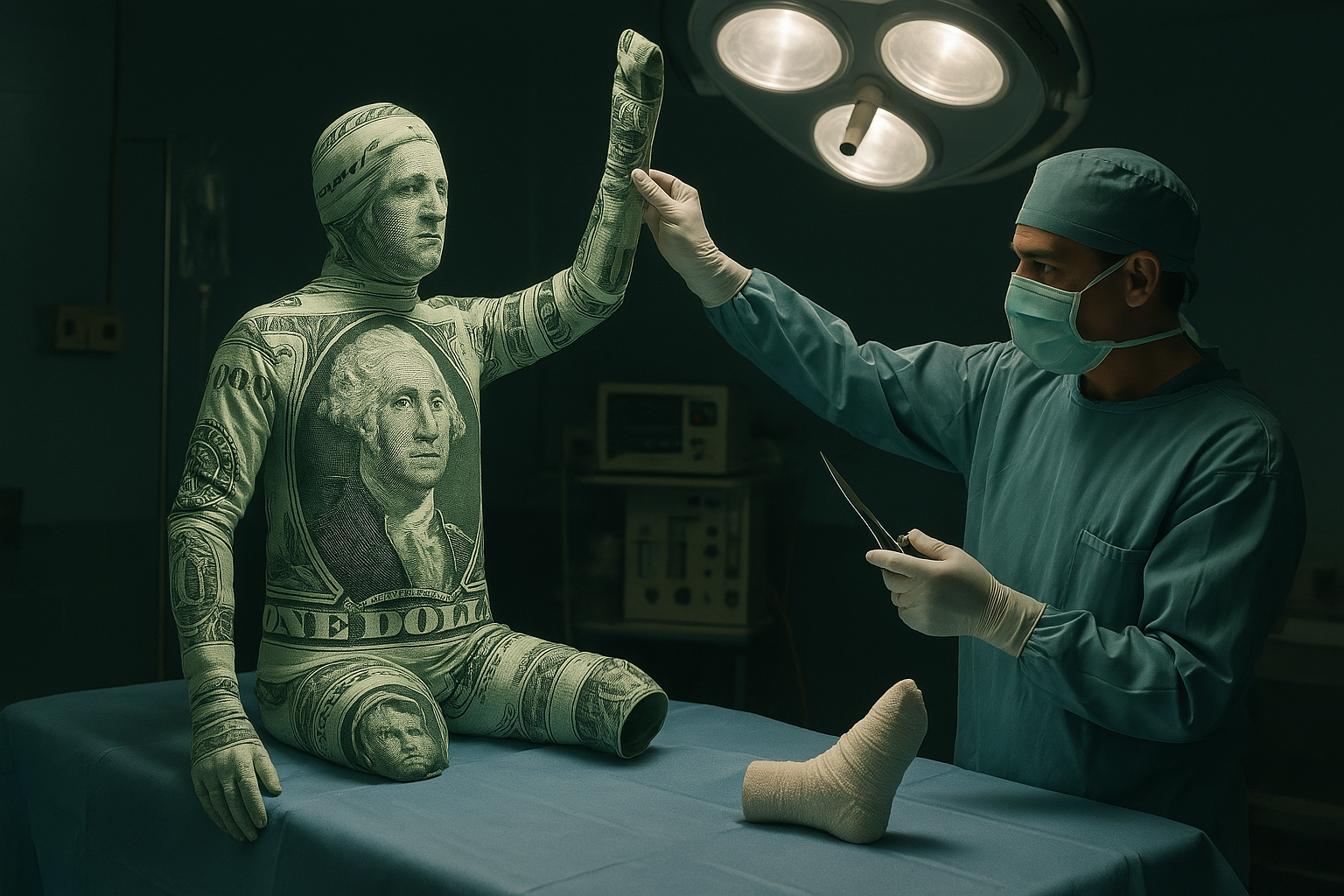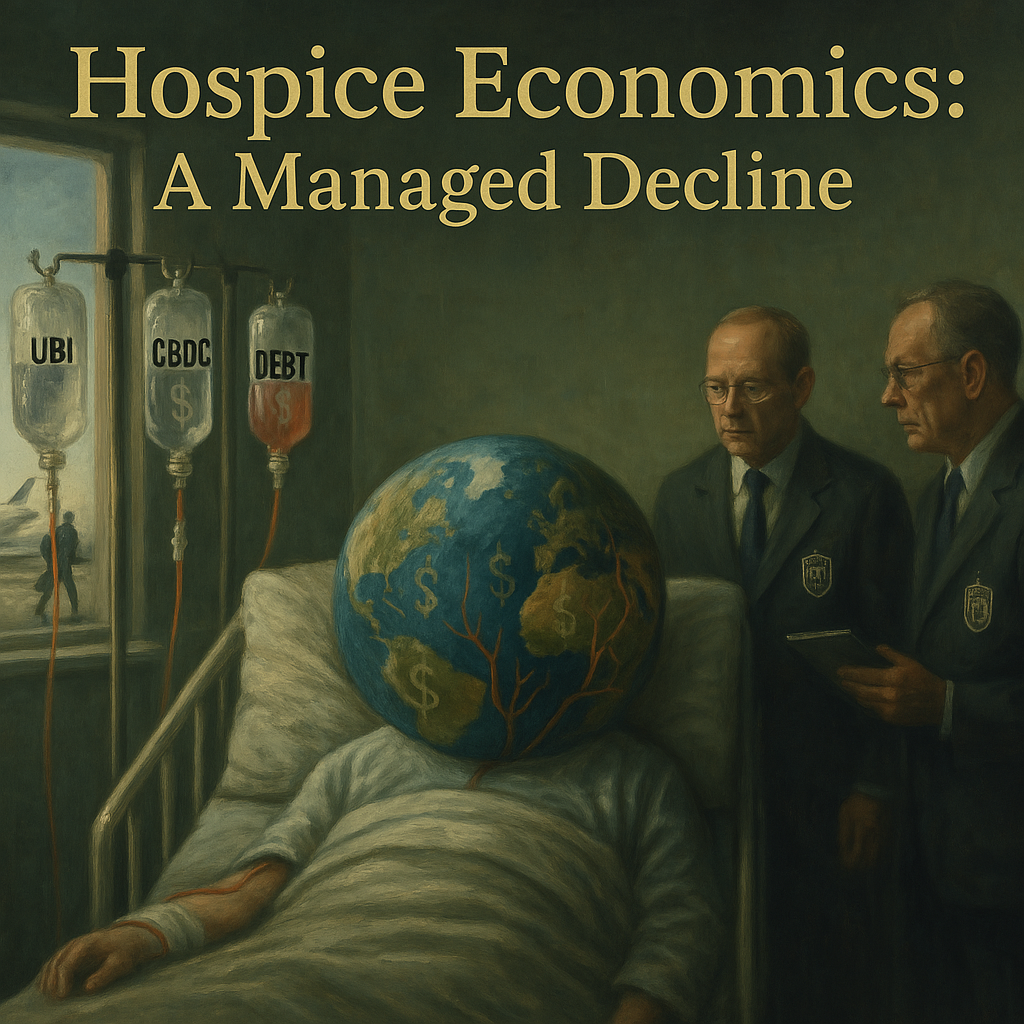Hospice Economics – A Managed Decline
Hospice care isn’t about healing. It’s about comfort, containment, and waiting. That’s exactly what the global economy has entered — a phase where political leaders, central banks, and institutional elites are no longer trying to fix what’s broken. They’re managing decline while pretending recovery is just around the corner.
Currency Devaluation: The Silent Kill Shot
When governments cannot pay debts honestly, they inflate them away. Printing money is taxation without legislation — it erodes savings, wages, and trust. But it’s quiet, politically safe, and masks dysfunction.
In the past three years:
- U.S. and Canadian dollars lost purchasing power dramatically.
- European inflation reached double digits in many sectors.
- Emerging markets saw currencies collapse outright.
This isn’t economic growth. It’s economic hospice: stabilizing a dying system by making everything cheaper in name only.
Austerity: The Slow Strangulation of Public Life
To maintain appearances of solvency, governments cut essential services:
- Hospitals underfunded
- Education scaled back
- Infrastructure postponed
Yet military budgets and banker bonuses remain untouched. The message is clear: the dying economy will be administered painkillers, but no cure.
Universal Basic Income (UBI) and CBDCs: Comfort or Control?
In hospice, patients are sedated to manage pain. In economics, this comes as UBI and Central Bank Digital Currencies (CBDCs). UBI could alleviate suffering — but when tied to programmable digital money, it becomes a behavioral control tool.
Want your payment this month? Behave. Speak against the state? Your funds may be paused.
Hospice isn’t just about care. It’s about containment.
The Two-Tier System: Managed vs. Managers
The elites, flush with assets and insider knowledge, are buying farmland, gold, private islands, and legacy assets. Meanwhile, the managed class is told to rent forever, obey often, and hope for stability.
It’s the final evolution of neoliberalism: total control of the patient by those who never intend to cure it.
Public Passivity: The Death of Resistance
Like sedated patients, much of the public is numb. Distracted by devices, divided by ideology, and drained by inflation, there is little energy left to fight the system. The hospice model thrives when patients give up.
If AI Had Been Used Then: AI would have shown the mathematical inevitability of debt spirals, predicted social fracture points, and modeled alternative paths — local resilience, progressive taxation, industrial policy. It could have advised triage and recovery. But we instead used it to optimize hospice administration. We handed AI the morphine, not the scalpel.

